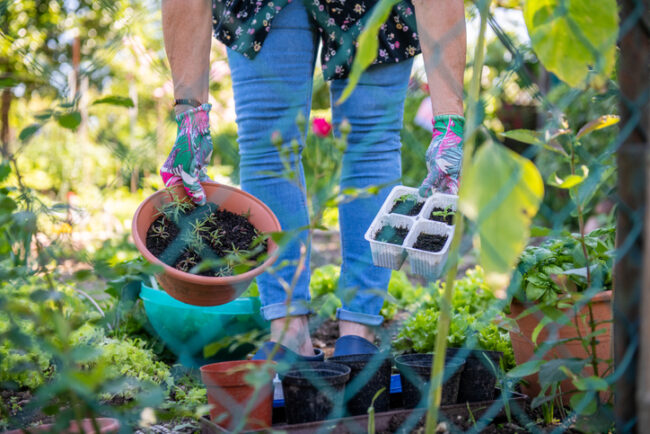
Spring has sprung, and many of us are eager to get back to our gardens. The joy of seeing your flowers bloom and vegetables ripen is unbeatable. But, amidst all the excitement, have you ever stopped to think, “What’s the best gardening posture?”
In this article, we’ll explore the importance of proper gardening posture and techniques for injury prevention, ensuring that your gardening experience remains enjoyable and free from aches and pains.
Let’s dive into the importance of good gardening posture and how to avoid common injuries related to gardening.
The Importance of Proper Gardening Posture
The best posture for pulling weeds or doing any gardening task is the one that keeps you safe and injury-free. Poor gardening posture can lead to musculoskeletal problems, causing discomfort and disrupting your daily life.
Whether you’re a seasoned green thumb or just starting out, these tips will help you cultivate a more ergonomic gardening setup and improved posture.
- Choose the right tools & accessories: Invest in the best ergonomic garden tools designed to minimize strain on your wrists, back, and joints. Look for tools with cushioned and adjustable handles to suit your height and reach. Consider ergonomic accessories like knee pads, gardening stools, and cushioned gloves for added support and comfort. These can help reduce strain and make gardening tasks easier.
- Make use of raised beds or containers: These can help reduce excessive bending or kneeling, thus reducing strain on your back and knees and enabling you to garden longer without discomfort.
- Maintain proper body mechanics:
- Bend your knees and lift with your legs when lifting heavy items like bags of soil or pots. This helps distribute the weight evenly and reduces the strain on your back.
- Avoid prolonged bending or twisting; instead, try squatting or kneeling when reaching low areas.
- Take breaks regularly: Gardening can be physically demanding, so it’s important to rest and stretch your muscles frequently to prevent fatigue and injury.
- Start slowly and take frequent breaks to stand up and stretch.
- Spread the work out over several days or weeks.
- Stay hydrated! Drink more water than you think you need.
- Mix up your gardening tasks to avoid overuse injuries: Don’t stick to one task for an extended period. If you’ve been pulling weeds for a while, switch to pruning or raking to give your muscles and joints a break.
Remember, good gardening posture is not just about avoiding injuries, it also enhances your balance and stability, making you more efficient in your gardening tasks.
Anyone who gardens will agree that it can be extremely hard work unless you limit yourself to a few potted plants on the deck. There are both traumatic and repetitive strain injuries (RSI) that can interrupt your gardening fun if you aren’t careful.
Repetitive Strain Injury Prevention
It can be easy to risk injury by missing the signals your body is sending you; like a simple ache in the elbow or strain in the back. Repetitive Strain Injury (RSI) is a serious disorder, so listen to your body!
The most important rule in RSI prevention is to never work through pain. If your shoulder aches even before you start your pruning job, you should either postpone the task until your shoulder is better or ask for help.
Stop doing what hurts and keep your body conditioned. Practice healthy habits, and use the right tools so you can be an expert gardener!
Even if you are used to a regular program of exercise, gardening requires its own strength and flexibility.
- Back. For low back strength, work on strengthening core muscles, especially all of the abdominals. For flexibility, work on spinal range of motion while seated: forward, backward and side bending.
- Arms and shoulders. Activities in the garden require lifting, reaching overhead, and digging with a trowel that can result in strain injuries if muscles are weak. To prevent this, strengthen them and increase your flexibility by working on your biceps, triceps, chest, shoulder and forearm muscles.
- Hand. The hands are used extensively in gardening. Hand strengthening exercises to increase grip strength consist of gripping and squeezing. Work on gripping/squeezing exercises with 25-30 repetitions before you feel tired. This approach builds both strength and endurance, which you need when gardening.
- Knees. Your knees are stressed when you squat or push a cart uphill. Strengthening and lengthening the quadriceps is important.
By following these tips and integrating ergonomic gardening tools and accessories into your routine, you can make gardening a more enjoyable and comfortable activity. Remember to listen to your body and take breaks when necessary.
Did you know you have Direct Access* to Physical Therapy? No referral, no problem!![]()
Are you following us on Instagram yet? Click here to check out our daily content!









